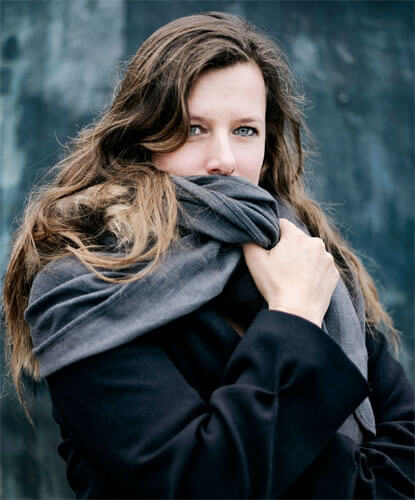Julia is a world-wide acclaimed and exhibited fine-art photographer. She has had portraits commissioned by the National Portrait Gallery, that are held in permanent collection. She is a winner of the HSBC Fondation pour la Photographie award and a Hasselblad Master. Her images are on the front covers of 'A Guide to Collecting Contemporary Photography' (Thames and Hudson, 2012) and Eyemazing Magazine. She is widely sought after as a judge for adjudicating at prestigious international photographic competitions and as a speaker at international events.
The foundation of her success as a fine-art photographer was 'Teenage Stories' (2005), an evocative narrative of the transition of a teenage girl to womanhood. It portrays the different stages and life situations experienced by an adolescent girl as she grapples with the vulnerability of her teenage predicament – adjustments to a new body, her emotional development and changes in her social standing. Her book ‘Teenage Stories’ was published in 2007. This success was followed by other projects illuminating further stages a teenager experiences to becoming a woman - In Between (2009) and Awkward (2011). Julia freely admits to many of her scenes being autobiographical. This was even more so the case with her next project, Mothers and Daughters (2012). Here she based the project on her own experiences in her relationship with her mother, and the effects of her parents’ divorce. Unrequited love – A Testament to Love (2013) – completes Julia’s involvement with the female psyche, illustrating poignantly the struggles experienced by a woman when love goes wrong. Again there is no happy end, the woman is left with the despair of loneliness, loss and resignation.
More recently, Julia has shot a series of projects where she has engaged with social issues. Unadorned (2012) takes on the issue of the modern Western society’s over-emphasis on the perfect figure, both female and male. For this project she sourced overweight models and asked them to pose in the nude in front of her camera against a backdrop similar to that of an Old Master’s painting, when voluptuousness was more accepted than it is now. ‘Blind (2013)’ confronts the viewer with a series of sympathetic images and interviews with blind people, some blind from birth, others following illness or an accident. Sight being one of mankind’s essential senses and her career being absolutely dependent on it, Julia hoped to find answers to her own personal situation if she were ever to become blind. Her most recent project, In Service (2014), exposes some of the goings-on behind the walls of the homes of the wealthy during the Edwardian era in the UK (1901 – 1911). Millions of poorer members of society escaped poverty by becoming servants in these homes, where it was not only hard work, but they were often subjected to exploitation and abuse.
Julia’s very distinctive style of fine-art photography is epitomized by her use of unusual locations, highly creative settings, street-cast models, and accented with cinematic lighting. She insinuates visual tensions into her images, and imbues them with a hint of mystery, that combine to tease the viewer to re-examine the picture continuously, each time seeing more content and finding a deeper meaning with every viewing.
Major events in which she has recently participated include Fotografiska, Stockholm; Noorderlicht, International Festival of Photography, Kristiansund, Norway; Dong Gang Photo festival, Korea; Daegu Photo Biennale, Korea; Museo Thyssen-Bornemisza and Fundacion Caja, Madrid; Pompidou Center, Paris; Shanghai International Photographic Art Exhibition; Hereford Photo Festival; The Museum of Contemporary Art Shanghai (MOCA Shanghai).
Guest Speaker - National Geographic Seminar in Washington DC; Fotografiska, Stockholm, and Noorderlicht, Norway.
Selected Books on

